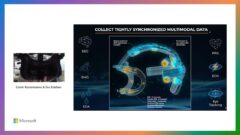Separability of Spatial Manipulations in Multi-touch Interfaces
Multi-touch interfaces allow users to translate, rotate, and scale digital objects in a single interaction. However, this freedom represents a problem when users intend to perform only a subset of manipulations. A user trying to scale an object in a print layout program, for example, might find that the object was also slightly translated and rotated, interfering with what was already carefully laid out earlier. We implemented and tested interaction techniques that allow users to select a subset of manipulations. Magnitude Filtering eliminates transformations (e.g., rotation) that are small in magnitude. Gesture Matching attempts to classify the user’s input into a subset of manipulation gestures. Handles adopts a conventional single-touch handles approach for touch input. Our empirical study showed that these techniques significantly reduce errors in layout, while the Handles technique was slowest. A variation of the Gesture Matching technique presented the best combination of speed and control, and was favored by participants.
We implemented and tested interaction techniques that allow users to select a subset of manipulations. Magnitude Filtering eliminates transformations (e.g., rotation) that are small in magnitude. Gesture Matching attempts to classify the user’s input into a subset of manipulation gestures. Handles adopts a conventional single-touch handles approach for touch input. Our empirical study showed that these techniques significantly reduce errors in layout, while the Handles technique was slowest. A variation of the Gesture Matching technique presented the best combination of speed and control, and was favored by participants.
- Date:
-
-

Andy Wilson
Partner Researcher
-

Patrick Baudisch
-

Hrvoje Benko
Senior Researcher
-
-
Watch Next
-
Galea: The Bridge Between Mixed Reality and Neurotechnology
Speakers:- Eva Esteban,
- Conor Russomanno
-
Neural Interfaces - Towards a new generation of human-computer interface
Speakers:- Yacine Achiakh,
- Alain Sirois


